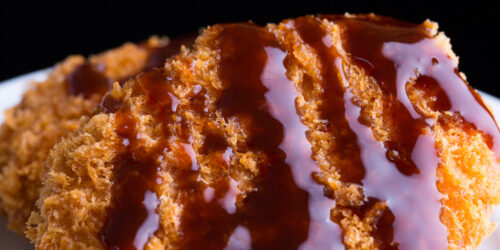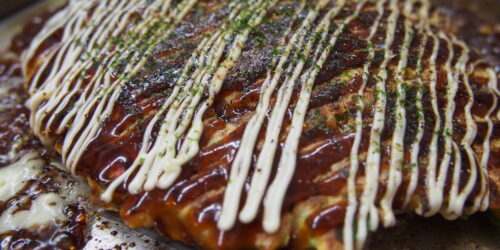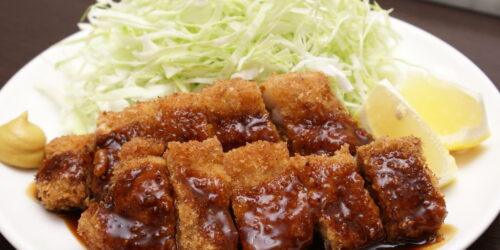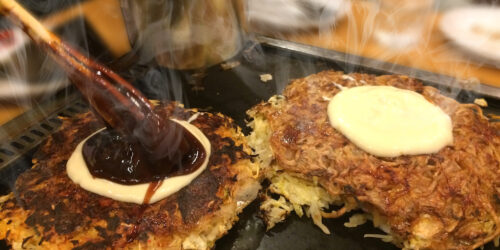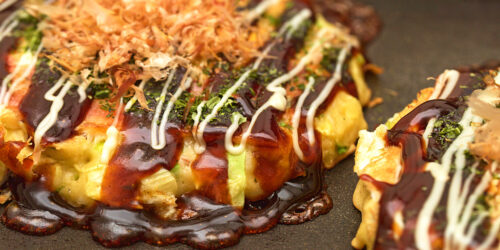[Ultimate Guide] Different Types of Japanese Sauce (Worcestershire, Chuno, Tonkatsu, and Okonomi Sauce)
Have you seen or tasted Japanese brown-color sauce called Worcestershire sauce (or called just “sauce”)?
English term, “sauce” usually refers to a liquid or cream that can be used as cooking garnish or in preparing other foods. But, “sauce” as a Japanese term is totally different from it.
When it comes to “sauce ソース” in Japan, it normally refers to Worcestershire sauce, tonkatsu sauce, and chuno sauce which are dark brown in color, and has salty, sour, and sweet taste at the same time.
This is one of the most common used Japanese seasonings, and generally, Japanese people like to use it when they eat deep-fried dishes such as tonkatsu (deep-fried pork), yakisoba, okonomiyaki, and takoyaki.
Here, let me introduce about the mystery of Japanese “sauce ソース” by explaining the different types of it: What they are and how they are used.
So What Exactly Is Japanese Sauce?
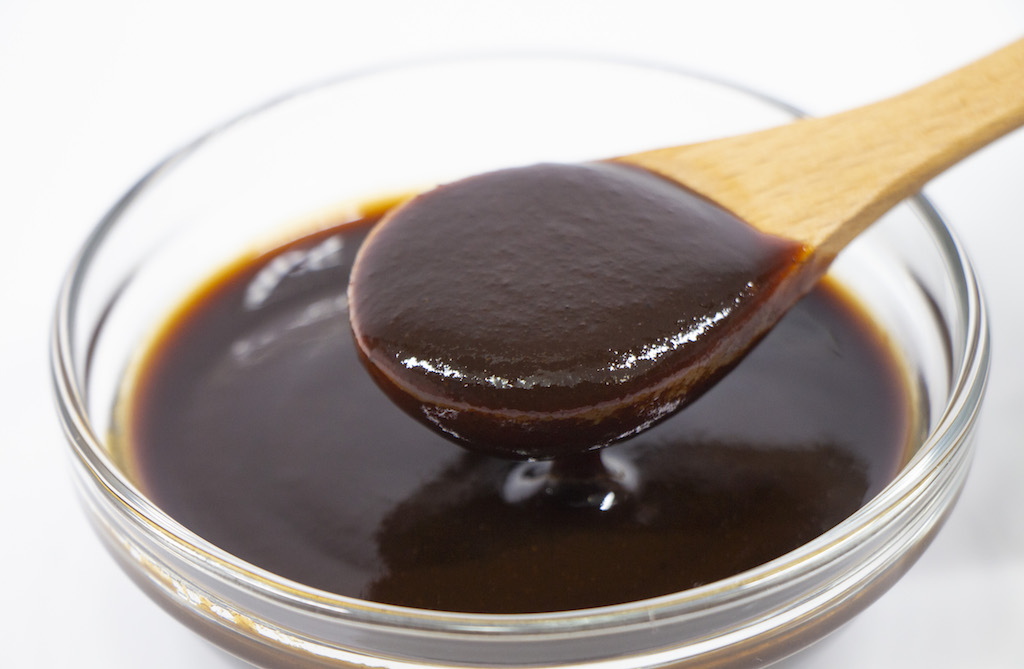
Actually Japanese “sauce ソース” is rigorously defined by Japan Agricultural Standards (JAS).
The sauce that meet the following items is called “Worcestershire sauce” in Japan according to JAS.
・The mixture (puree) of vegetables (including carrots, onions, and tomatoes), fruits juice, and broth seasoned with sugar, vinegar, salt, and spices. Also, starch and other seasonings are added in some cases.
Different Types of Japanese Sauce
Even though every sauce that meet the above conditions are defined as “Worcestershire sauce” according to JAS, there are 3 different types of Worcestershire sauce depends on their thickness.
The specific thickness of each sauce is also defined by Japan Agricultural Standards (JAS) by the way.
Roughly speaking,
・Not thick, but watery sauce → called “Worcestershire sauce” ウスターソース
・Moderately thick sauce → called “Chuno (medium thick) sauce” 中濃ソース
・Very thick sauce → called “Noko (very thick) sauce” 濃厚ソース
There are 4 main products on the market as follows:
1. Worcestershire Sauce ウスターソース
2. Chuno Sauce 中濃ソース
3. Tonkatsu Sauce とんかつソース*
4. Okonomi Sauce お好みソース*
*#3 and 4: Tonkatsu sauce and Okonomi sauce are categorized as Noko (very thick) sauce 濃厚ソース.
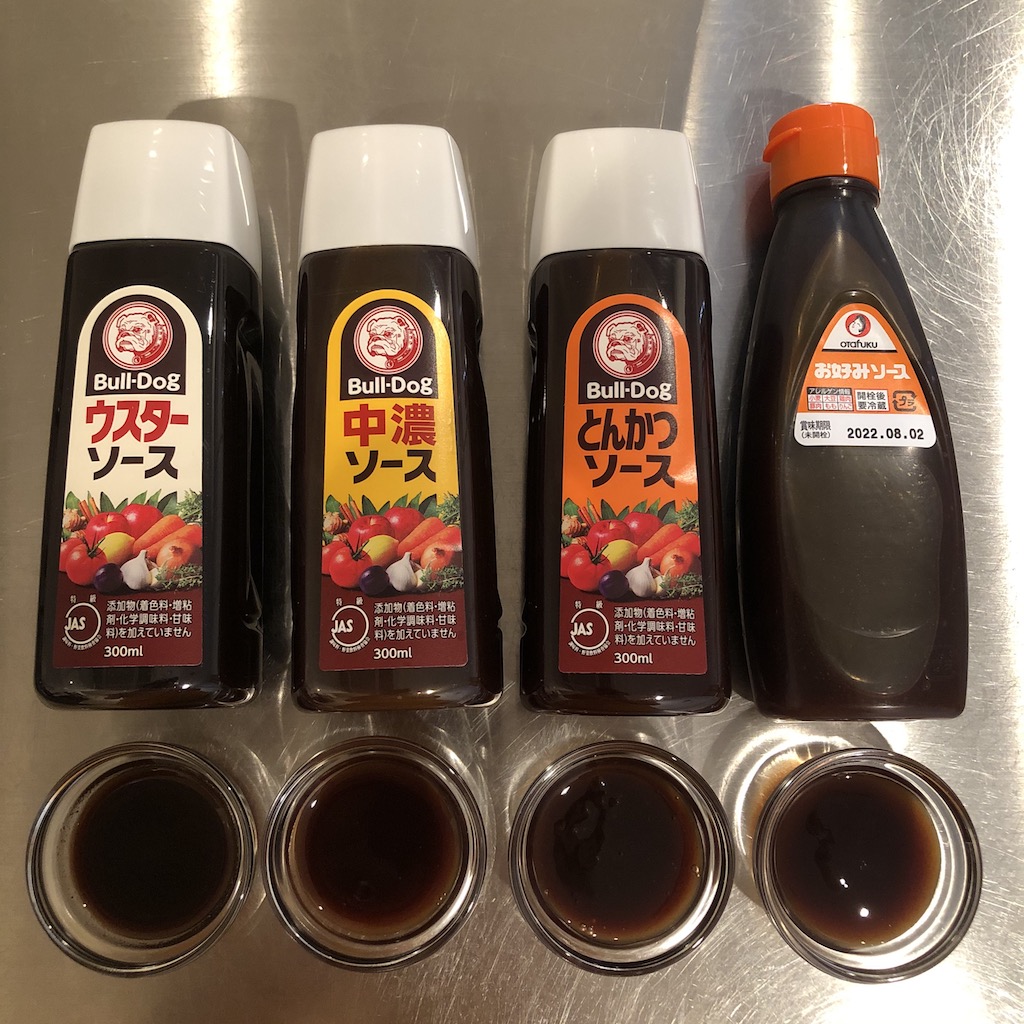 ▲In Japan, the sauce brand “Bull-Dog” is very popular for #1-3.
▲In Japan, the sauce brand “Bull-Dog” is very popular for #1-3.
And the sauce brand “Otafuku” is very popular for #4.
Let me explain about the differences among those 4 types sauce in terms of taste, raw materials, and suitable dishes.
Worcestershire Sauce ウスターソース
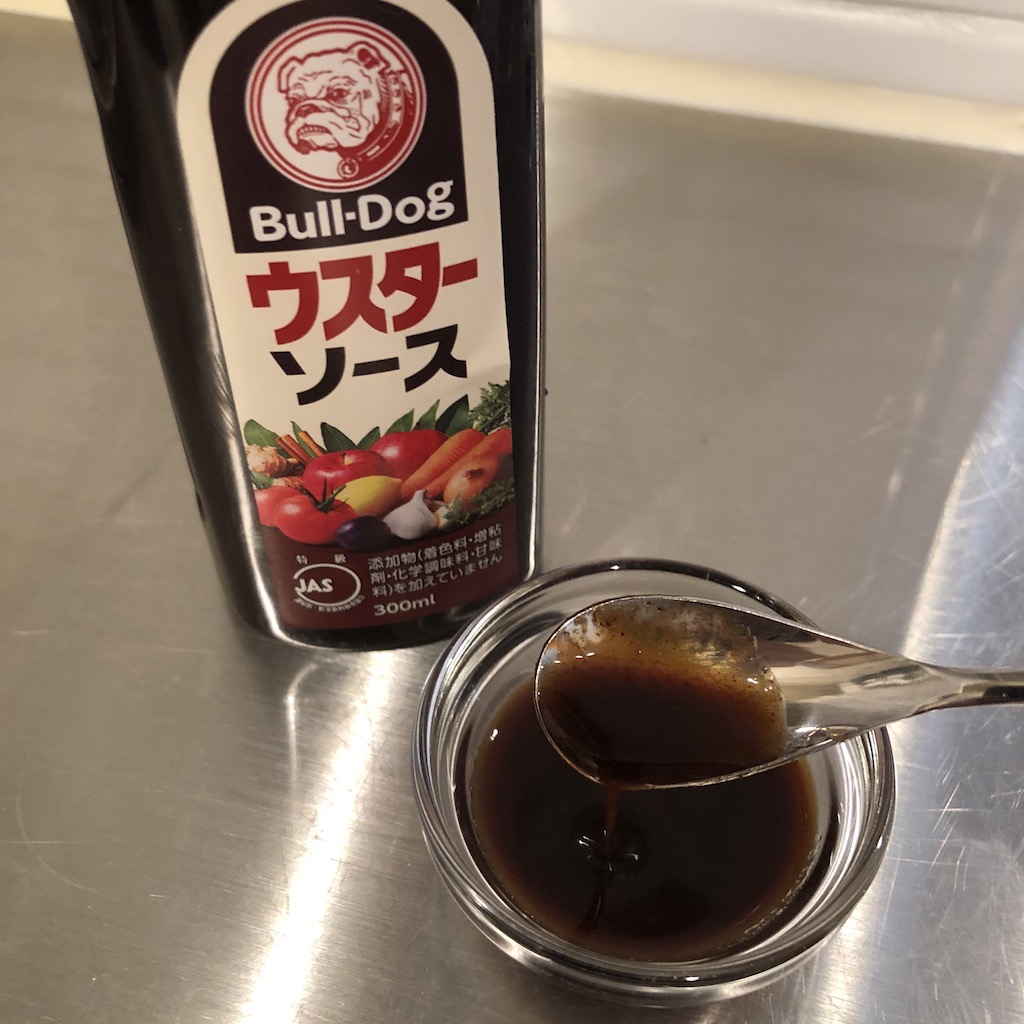
Characteristics of Taste and Ingredients
Worcestershire sauce originated in the Worcestershire region of England. But the British one is more sour than the Japanese one, and it also contains garlic and anchovies.
The Japanese Worcestershire sauce has more sweetness of vegetables and fruits.
Compared to other Japanese sauce (chuno sauce or tonkatsu sauce), it contains more spices and vinegar, so it has more refreshing taste with punching effect.
Probably, out of all 4 types, you could feel sourness of vinegar and the sharp taste from spices most.
Japanese Worcestershire sauce is not thick but watery because vegetable and fruit fiber has been removed and only juice is used in the manufacturing process.
Suitable Dishes
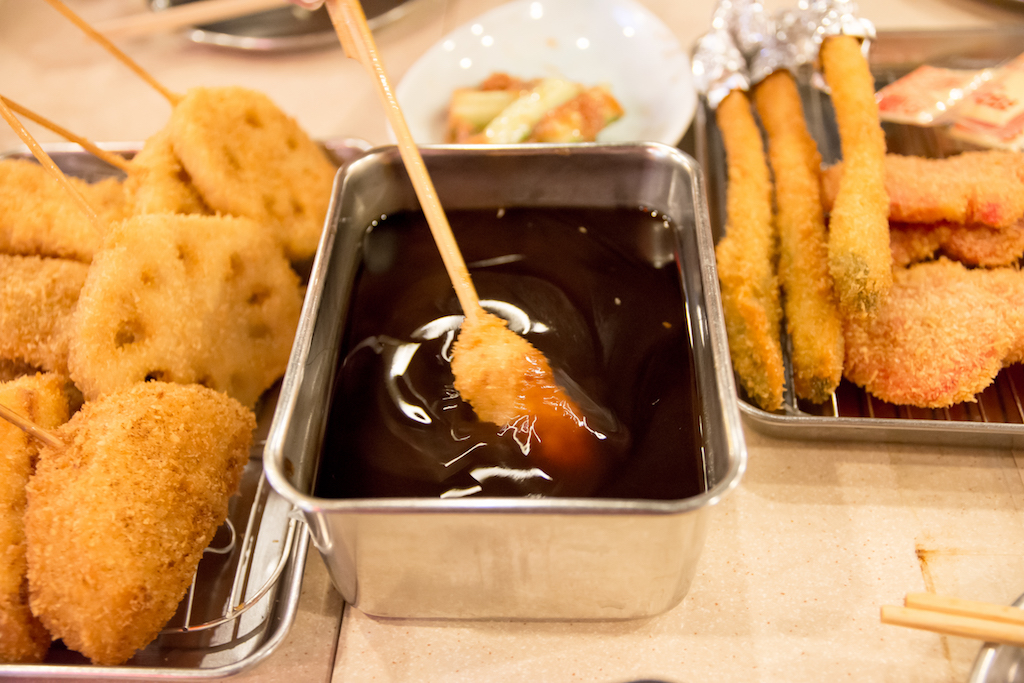 ▲Kushi-Katsu
▲Kushi-Katsu
It’s commonly used for the sauce when people eat kushi-katsu (deep-fried skewered meat and vegetables). Watery sauce easily cover whole surface of skewered ingredients, so it’s perfect match for kushi-katsu.
Basically Worcestershire sauce is more popular in Western Japan than Eastern Japan. Probably it’s because kushi-kastu is local food in Osaka that located in Western Japan.
Another common way to use Japanese Worcestershire sauce is to season yakisoba (stir-fried noodles).
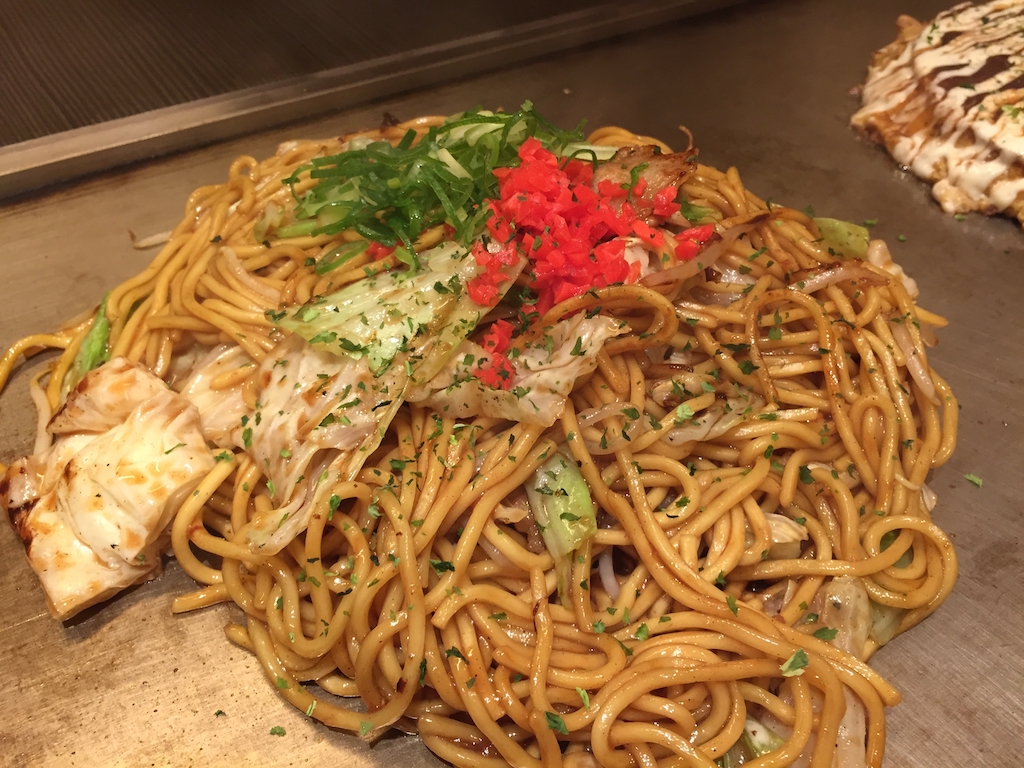 ▲Yakisoba
▲Yakisoba
By the way, I have made yakisoba with instant noodles and Worcestershire sauce. Please check it out.
How to Make Best Yakisoba with Instant Noodles (Recipe)
For advanced use, you can use Worcestershire sauce as a secret ingredient for pasta sauce and stir-frying dishes. Also, spices and vinegar in Worcestershire sauce could take away the strong smell of meat dish.
Chuno Sauce 中濃ソース
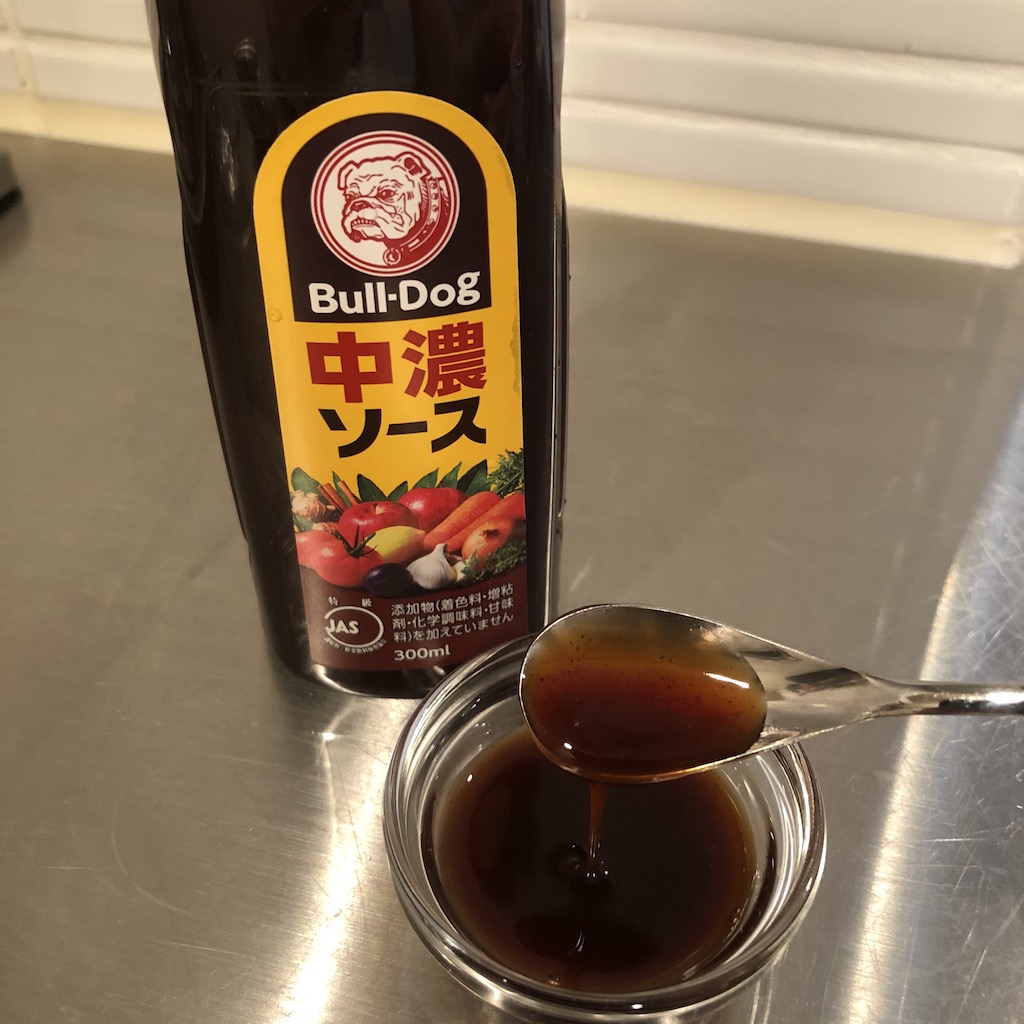
Characteristics of Taste and Ingredients
Chuno means “medium thick” or “moderately thick”, and this sauce is thicker and sweeter than Worcestershire sauce. But, it’s not as thick and sweet as tonkatsu sauce. So it’s exactly intermediate version of sauce.
You can feel sweetness of vegetables and fruits moderately, and a little sour taste at the same time.
Suitable Dishes
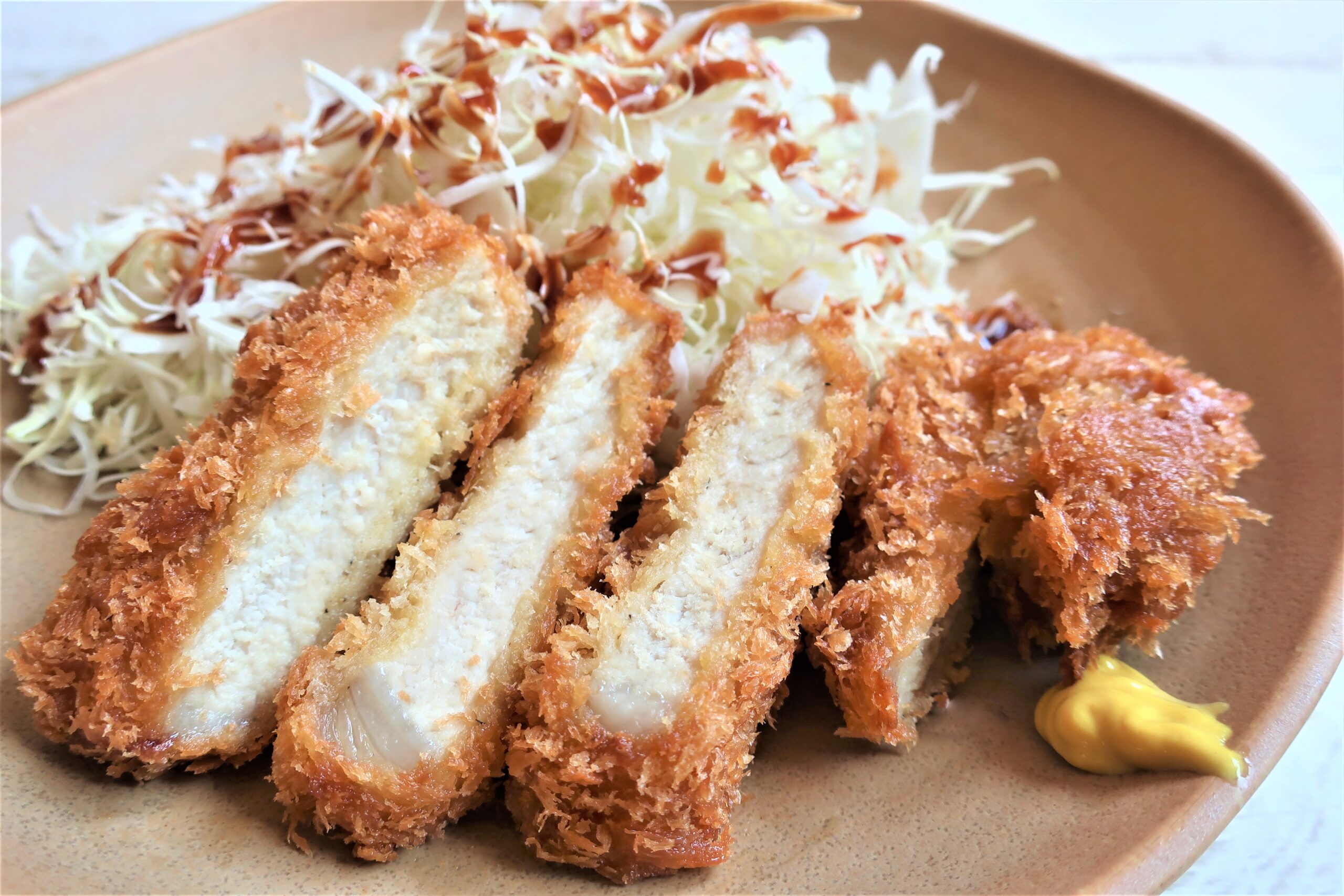 ▲Tonkatsu
▲Tonkatsu
Chuno sauce can be used all kinds of dishes. Deep-fried dishes are especially the best for it. If you don’t have tonkatsu sauce, it’s totally fine to use chuno sauce for tonkatsu instead of tonkatsu sauce. It perfectly matches with not only the deep-fried pork but also shredded cabbage.
For advanced use, you can use chuno sauce as a secret ingredient for simmered dishes, curry, and tomato meat sauce. The sauce can add great umami (delicious taste) and koku (broth) to the dishes.
Having only chuno sauce in a refrigerator is probably the best way for those who are not picky about the sauce.
Tonkatsu Sauce とんかつソース
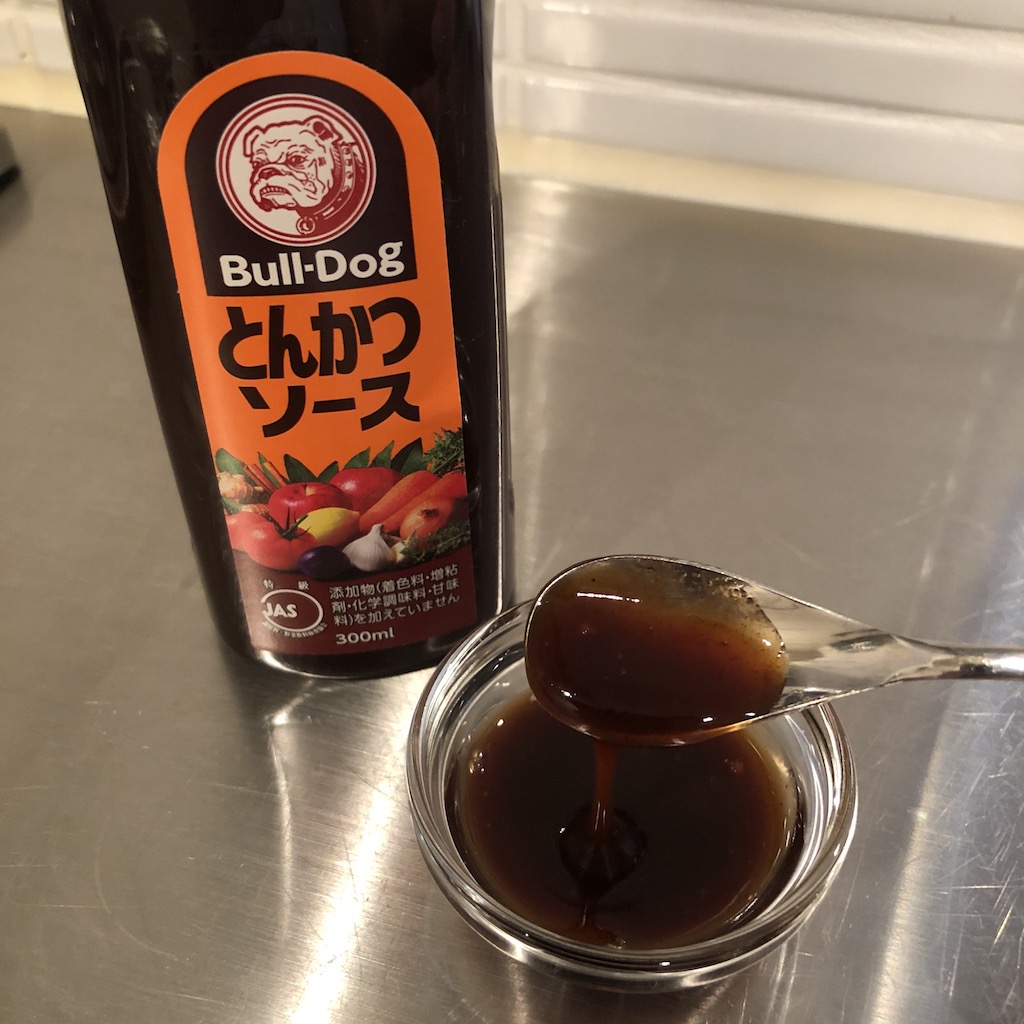
Characteristics of Taste and Ingredients
It’s categorized as noko (very thick) sauce 濃厚ソース, and as the name suggests, tonkatsu sauce is suitable for oily meat dishes such as tonkatsu (deep-fried pork).
The spicy taste of spices is suppressed a little in this sauce, and it’s slightly sweeter than chuno sauce. You can feel sweetness first, and saltiness and sourness next.
Since it has thick texture and rich and sweet taste, it can match so well with oily foods.
Suitable Dishes
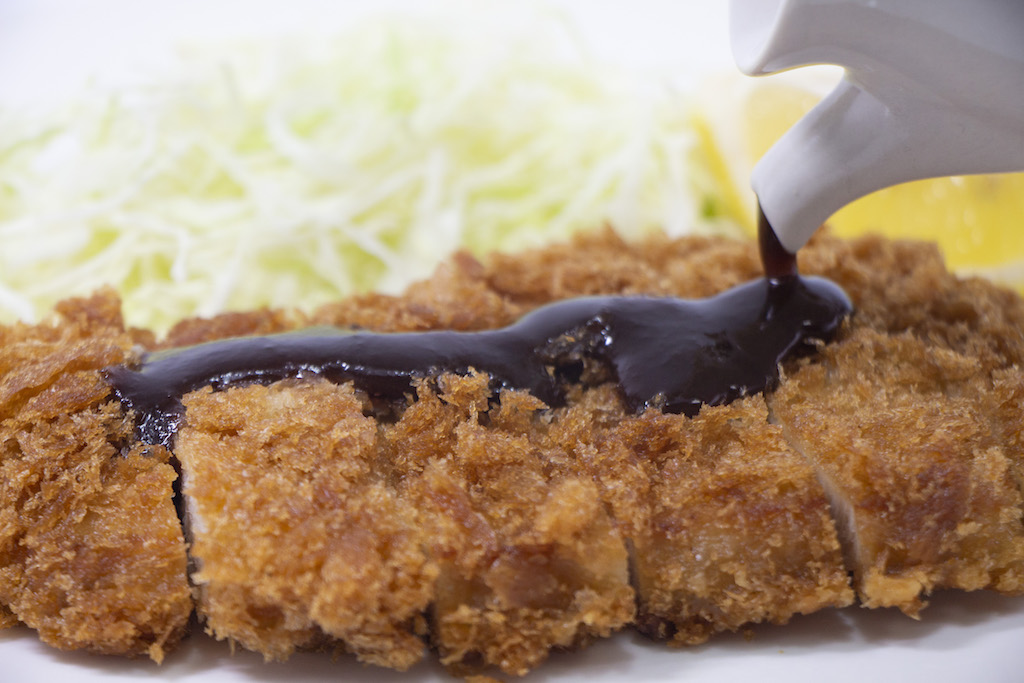
As you know, it’s perfect match for tonkatsu. Other deep-fried dishes are also welcomed.
For advanced use, you can use it in the same way as chuno sauce actually. I recommend to use it for simmered dishes, curry, and tomato meat sauce. The sauce can add great umami (delicious taste) and koku (broth) to the dishes.
Okonomi Sauce お好みソース
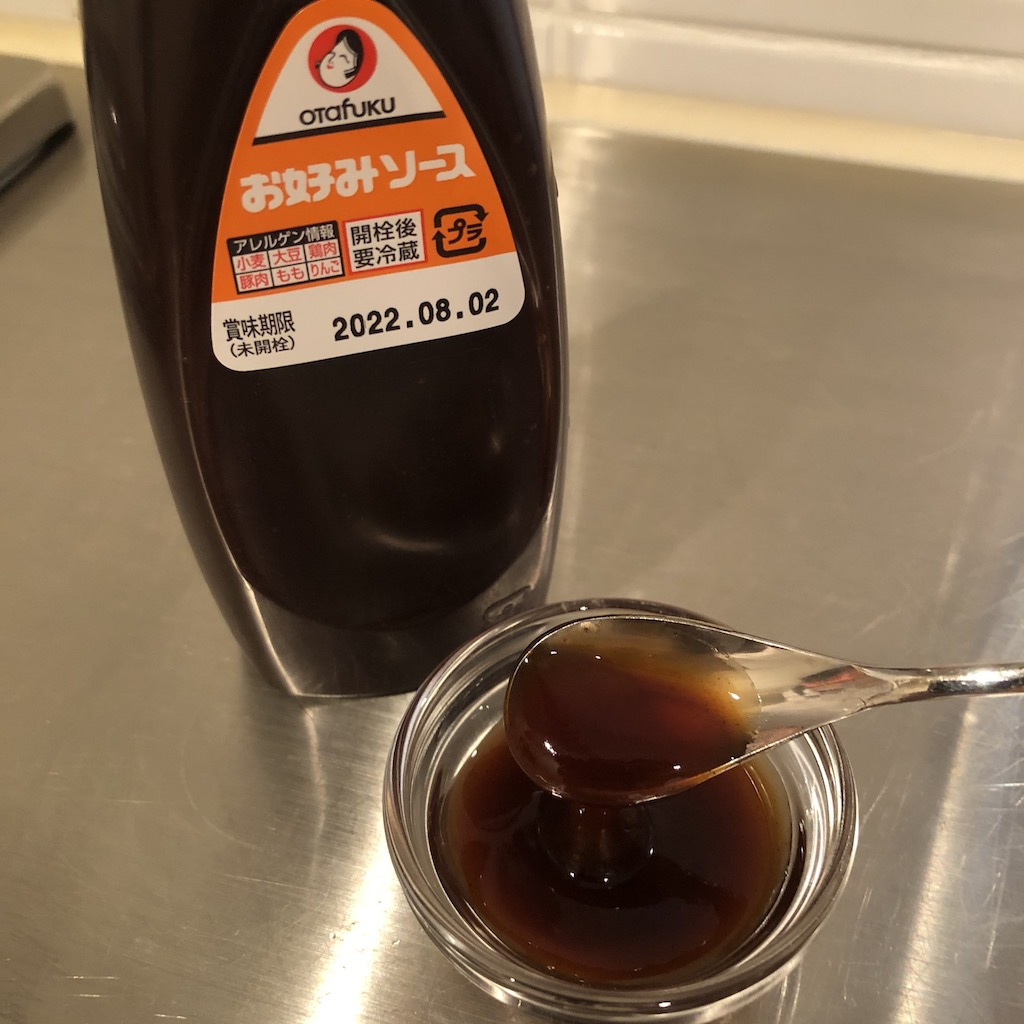
Characteristics of Taste and Ingredients
As the name suggests, it’s the sauce exclusively for okonomiyaki. And it’s also categorized as noko (very thick) sauce 濃厚ソース just like the tonkatsu sauce.
It has moderate sweetness and sourness, and its thickness is perfect for applying to okonomiyaki.
Unlike the above 3 sauces, okonomi sauce usually contains kombu stock, shiitake mushrooms stock, and meat extract so that those ingredients improve the taste of okonomi sauce dramatically.
Suitable Dishes
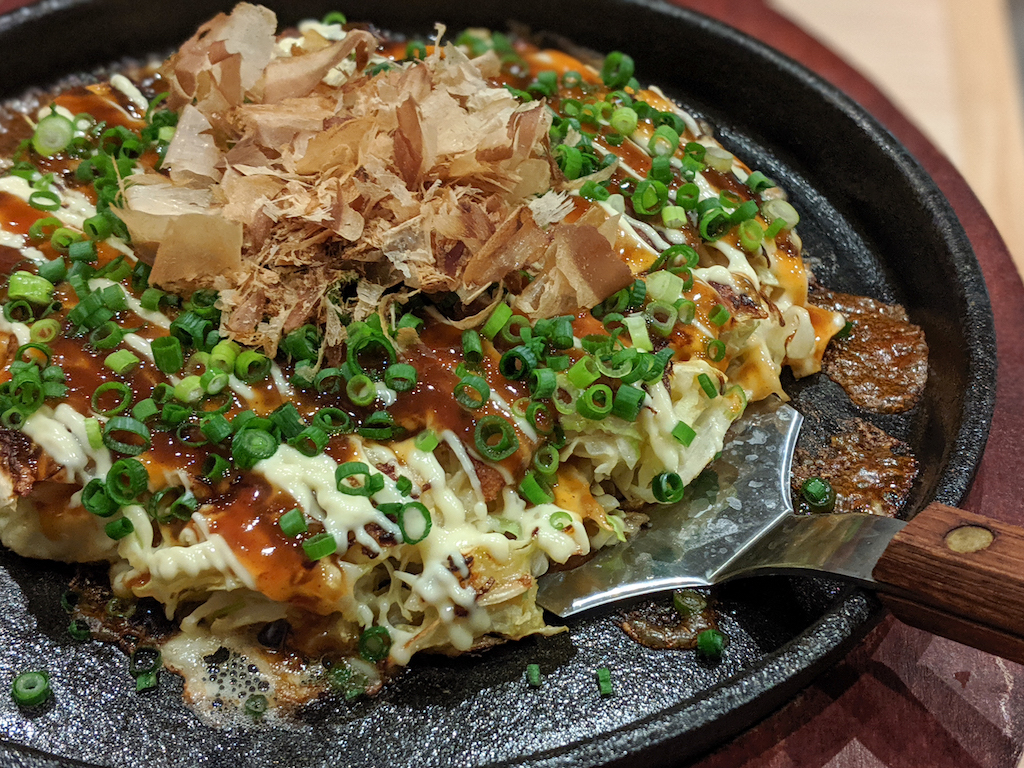
As you know, it’s perfect match for okonomiyaki. Also, putting it on takoyaki is great way to use.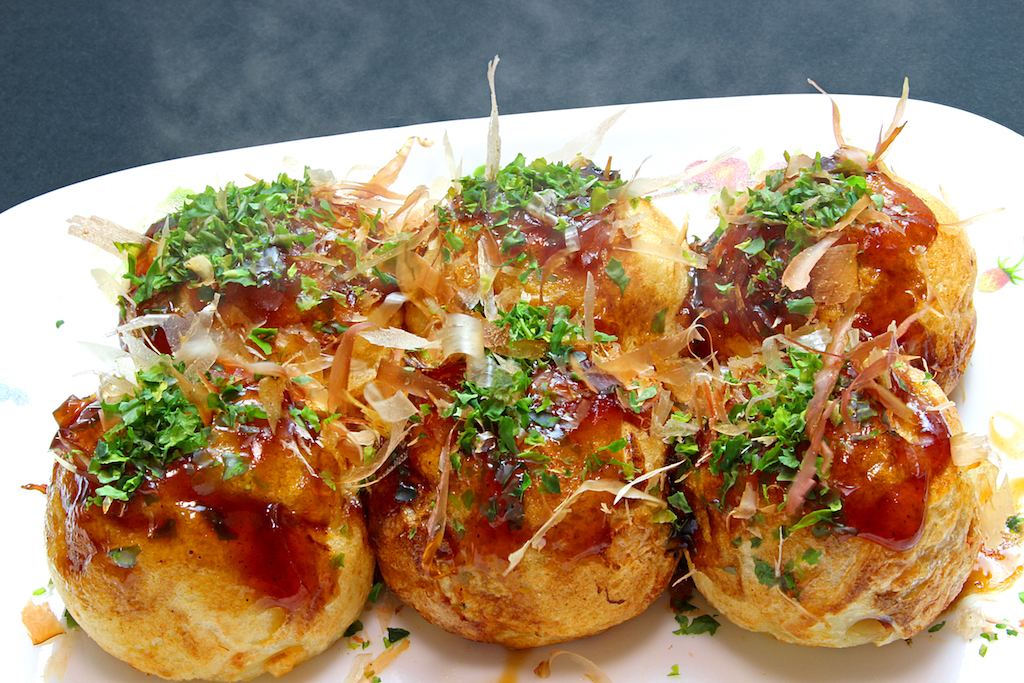
For advanced use, you can use okonomi sauce as a secret ingredient for stir-frying dishes.
Now, you know the differences among 4 different types of Japanese “sauce”.
Those are very similar in taste, but each one of them has great feature and matches each dish.
So if you have a chance to get several kinds of sauce, please do “taste test” at your home, and find your favorite one!
Related links about Worcestershire Sauce:
What Is Worcestershire Sauce in Japan?
The Easiest 2 Minutes Worcestershire Sauce (Recipe)
Easiest Substitutes for Worcestershire Sauce In Recipes

